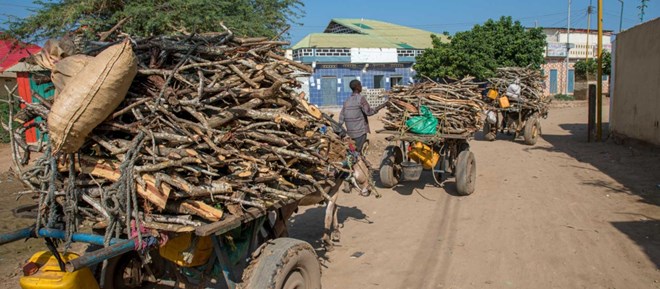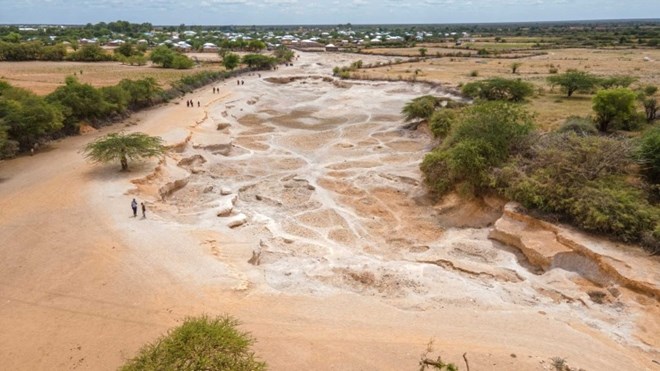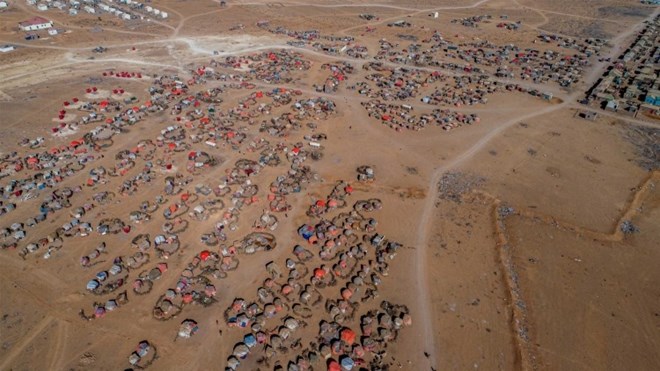Thursday July 28, 2022
By ABDIRAHMAN ZEILA DUBOW
Photo: Mohamed Abdihakim/World Bank
Climate change further complicates these risks and adds new dimensions to them.
Somalia’s economy greatly depends on its natural capital: land, rivers, forest, sub-soil assets, and marine resources of fish. Livelihoods and opportunities for economic growth are governed by Somalia’s climate and geography. The agriculture sector (including livestock production and livestock exports, crop production, and fisheries) is the country’s largest economic sector, the largest employer in rural areas within nomadic cultures, and the largest driver of exports, despite its existing weaknesses. Smallholder, subsistence-oriented, crop production systems remain a major source of income. Food security among rural households, and the evolution of value chains in agribusiness—such as the processing of cereal grains—represents strong opportunities for future development.
But, as of June 2022, three consecutive rainy seasons had failed, a climatic event not seen in the last 40 years in Somalia. Multiple areas of Somalia face the risk of famine amid this exceptionally severe drought, soaring staple food prices, and the death of about 30% of Somali livestock since mid-2021.
An estimated 4.6 million Somalis face acute food shortages; 7.7 million people require humanitarian assistance; 1.3 million were projected to be displaced by July 2022. In November 2021, the Government of Somalia declared the drought a national emergency and requested international assistance.

Natural capital dwindling
Despite the potential value of its natural resources, however, Somalia’s natural capital is under stress. Today its land degradation rate is estimated at between 23% and 30%, one of the region’s highest, —three times higher, for example, than neighboring Kenya’s. A 2020 Somali government report notes Somalia lost 147,704 km2 to land degradation between 2000 and 2015, a figure representing 27% of its total land area and attributed to a combination of factors, including soil erosion, biological degradation, and gully erosion.
Given that, without degradation, the estimated value of Somalia’s land resources would be US$222.3 billion (World Bank, 2020), promoting sustainable management and restoring the productivity of land is crucial to benefit future generations. Trees are an essential part of Somalia’s natural capital.
Threats come from two main, interconnected directions: recurrent drought and inappropriate land use. Droughts are growing increasingly frequent, not just because of climate change but also because of poor land use and market-driven obstacles to environmental stewardship and resource governance. As a result, the 1.03% annual rate of deforestation is again three times that of neighboring Kenya at 0.3%, and almost twice the 0.62% average rate of loss for Africa (World Bank’s Somalia Country Environmental Analysis: Diagnostic Study on Trends and Threats for Environmental and Natural Resources Challenges).
Since there is a close relationship between the performance of the Somali economy and the health of its natural capital, this does not bode well for Somalia’s future. The country’s forests are disappearing. These, although mostly classified as low-density, contain 394 million metric tons of carbon in living biomass. Somalia lost about 686,000 hectares of forest between 2000 and 2017, an annual loss that equals at least 6% of all the trees lost in Africa, often from using land for livelihoods made in, for example, charcoal production.

This meant the loss of 205 million trees, the equivalent of creating five million tons of CO₂ emissions. The main theatre of forest loss is the southwest, where the Islamist al-Shabaab group holds territory. After livestock, charcoal is now the second-most important export from Somalia with up to 250,000 tons of it produced annually.
Somalia needs to place more emphasis on combating land degradation, in part through a major land reclamation effort, headlined by reforestation and integrated sustainable land management (SLM). Neighboring Ethiopia has implemented a SLM program. By co-opting smallholder farmers, it has seen success in preventing erosion and soil nutrient loss, especially in its agricultural highlands.
Following SLM best practice regionally could help Somalia to fight land degradation and encourage sustainable livelihoods. This would nurture the emergence of micro-climates, aid agricultural regeneration, and help biodiversity flourish, encouraging the growth of dozens of species of Acacia and Commiphora to produce gum arabic and myrrh.
Trees will provide the country with better prospects for weathering the ongoing storm.
-
Abdirahman Zeila Dubow
Ph.D., Senior Environmental Specialist